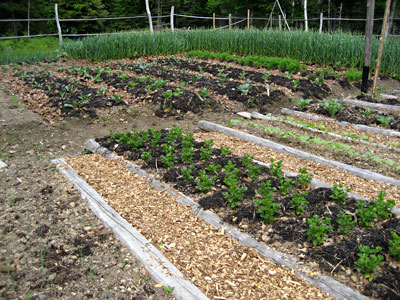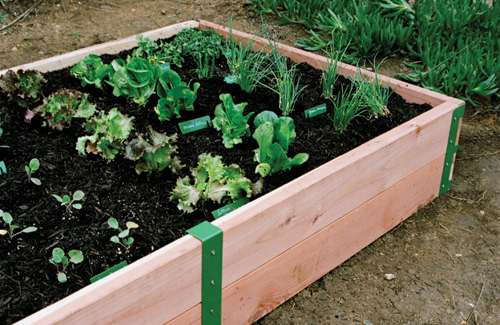Learn Just How to Grow a Growing Horticulture Setting for All Ability Degrees
Developing a growing garden is a diverse endeavor that can be embraced by people at any skill degree. By examining essential components such as dirt wellness, proper plant choice, and seasonal care routines, one can develop a sustainable gardening technique that produces gratifying results. Understanding how to analyze and improve your garden space lays the structure for success. Yet, the complexities of executing these principles often existing difficulties that can deter also one of the most passionate beginner. What strategies can be used to conquer these challenges and foster a genuinely growing atmosphere?
Understanding Your Garden Area
In the world of gardening, comprehending your garden area is paramount to cultivating a growing landscape (Homestead Gardening). The very first step in this undertaking entails assessing the certain features of your plot. Elements such as soil structure, sunlight direct exposure, and water drainage play crucial functions in establishing the viability of your yard for numerous kinds of plants
Begin by carrying out a dirt examination to assess pH degrees and nutrient web content, which will certainly inform any necessary changes. Furthermore, observe exactly how much sunlight your area gets throughout the day. Various plants have differing light needs; some grow completely sunlight, while others favor partial or complete color.

Finally, evaluate the available space and strategy as necessary. This consists of considering plant heights and infected make certain ample area for development without overcrowding. By getting an extensive understanding of your yard room, you established the structure for an effective gardening experience.
Picking the Right Plants
Picking the right plants for your yard needs cautious consideration of various aspects, consisting of climate, dirt problems, and personal choices. Begin by analyzing your neighborhood climate, as specific plants grow particularly temperature ranges and climate patterns. Tropical plants might not make it through in colder areas, while hardy perennials can withstand rough winters.

Consider your personal choices, including visual allure and maintenance degrees. Choose whether you favor dynamic blossoms, lush vegetation, or edible crops. Furthermore, consider the time and initiative you want to purchase plant care, as some ranges require even more attention than others.
Last but not least, think regarding the yard's layout and light exposure. Sunshine patterns throughout the day will certainly affect your options-- some plants call for full sunlight, while others grow in shade. By thoughtfully analyzing these elements, you can produce a unified and productive yard customized to your environment and tastes.
Crucial Gardening Tools
A well-equipped gardener can substantially improve their horticulture experience and results. Crucial gardening devices are basic to growing an effective yard, no matter skill level. A durable spade is indispensable for excavating and turning soil, while a trowel allows for precise planting and transplanting of smaller sized plants.
Trimming shears are crucial for preserving plant health and wellness by eliminating dead or thick branches, advertising much better air circulation and development. In addition, a hand rake works for clearing particles and freshening the soil, guaranteeing optimum problems for plant roots.
Gardening handwear covers secure hands from thorns, sores, and chemicals, making them a crucial device. A watering can or hose pipe with a flexible nozzle guarantees that plants get adequate dampness without overwatering.
Finally, consider buying a sturdy wheelbarrow for moving soil, plants, and tools around the garden successfully. By setting up a quality toolkit that consists of these vital products, gardeners can tackle numerous tasks with self-confidence and ease, leading the way for a thriving horticulture atmosphere. Bear in mind, the find more information right tools not just improve performance but likewise improve the total enjoyment of the horticulture process.
Soil Prep Work and Maintenance
Quality soil is the foundation of an effective yard, making proper preparation and maintenance vital for healthy and balanced plant development. Based on the examination results, amendments can be made to optimize soil problems for certain plant needs.
Incorporating raw material, such as compost or well-rotted manure, is vital for boosting soil structure and fertility. This not only enhances nutrition schedule yet additionally advertises valuable microbial task. In addition, correct water drainage is important; heavy clay soils might require the addition of sand or perlite to enhance aeration.
Regular maintenance of soil health and wellness includes mulching, which saves moisture and suppresses weeds. Turning crops yearly helps protect against nutrient deficiency and minimizes bug and illness risks. It is additionally vital to avoid over-tilling, which can interfere with dirt structure and harm advantageous organisms.
Inevitably, a constant dedication to soil prep work and upkeep will lead to a prospering garden, ensuring that plants get the vital nutrients they need for robust development and productivity.
Seasonal Treatment and Administration

In spring, emphasis on planting brand-new seeds and seedlings, while likewise conducting dirt examinations to modify nutrient shortages. Consistently inspect for conditions and insects, as these can multiply with the warming climate. Summertime needs consistent watering and mulching to maintain moisture, together with trimming for better air flow.
As fall strategies, it's time to prepare the garden for inactivity. This includes gathering plants, cleaning up debris, and applying a layer of compost to protect plant roots from frost. Take into consideration planting cover crops to enhance the dirt throughout the winter season.
Inspect structures like greenhouses for damage and make certain proper insulation for sensitive plants. By adapting your gardening practices to the seasonal cycles, you can foster a flourishing atmosphere that supports plant health and wellness year-round.
Conclusion
In final thought, growing an effective garden needs a detailed understanding of crucial concepts such as dirt composition, sunlight exposure, and appropriate plant selection. Implementing effective dirt prep work and upkeep strategies, in addition to making use of the right devices, cultivates an optimum expanding atmosphere. Routine seasonal care and administration methods further boost plant health and wellness and productivity. By sticking to these foundational standards, individuals in all ability levels can achieve a prospering yard that adds to both aesthetic enjoyment and ecological sustainability.
Selecting the right plants for your yard needs careful factor to consider of various aspects, including environment, soil problems, and personal choices. Conduct a soil test to identify pH levels and vitamins and mineral material, which will assist you in selecting plants that will certainly flourish in your garden.Last but not least, think about spending in a durable wheelbarrow for moving soil, plants, and devices around the garden successfully.Quality soil is the foundation of an effective garden, making correct preparation and upkeep essential for healthy and balanced plant growth. Homestead Gardening.In final resource thought, growing a successful yard calls for an extensive understanding of essential principles such as dirt composition, sunlight direct exposure, and ideal plant choice